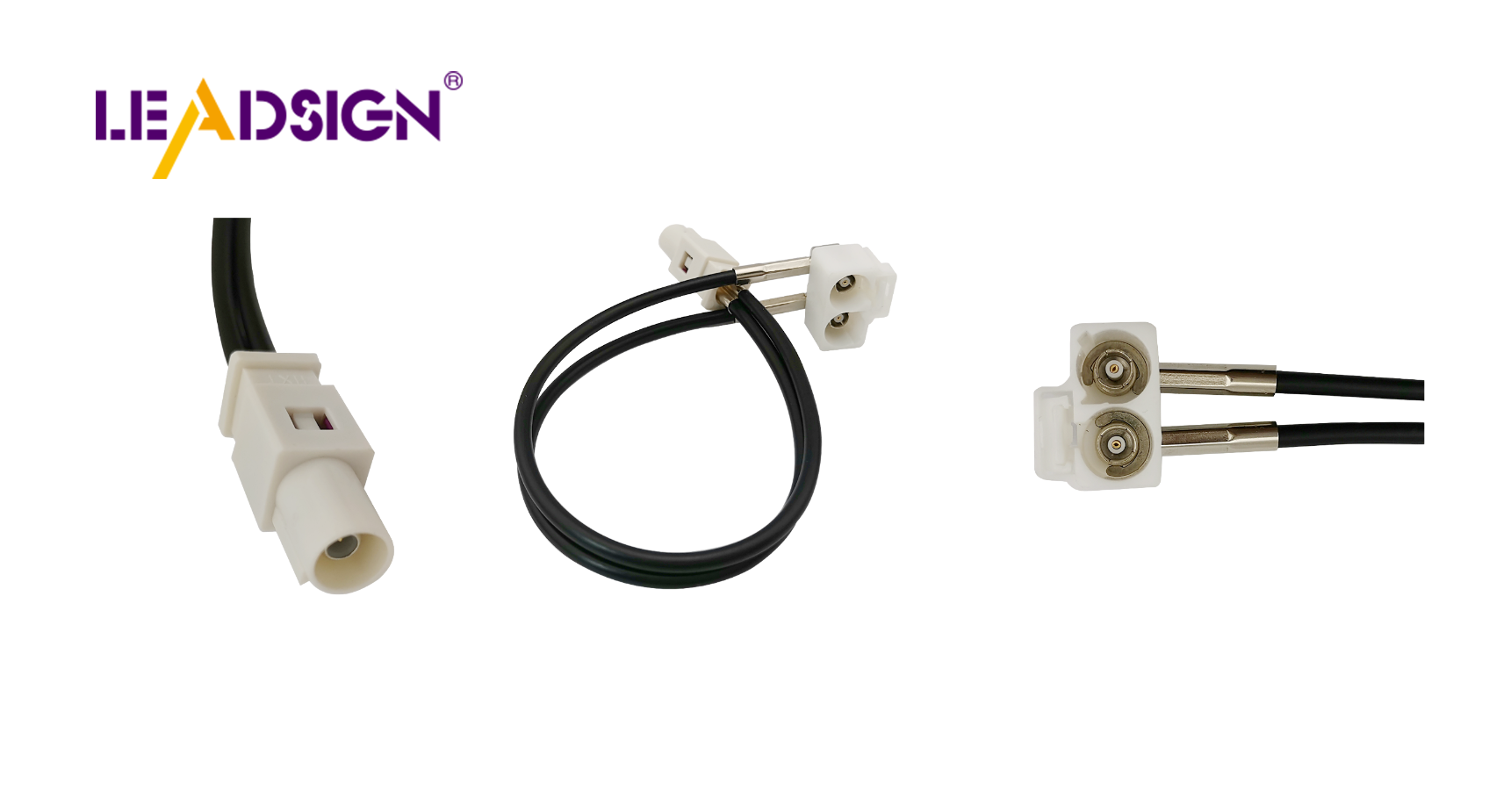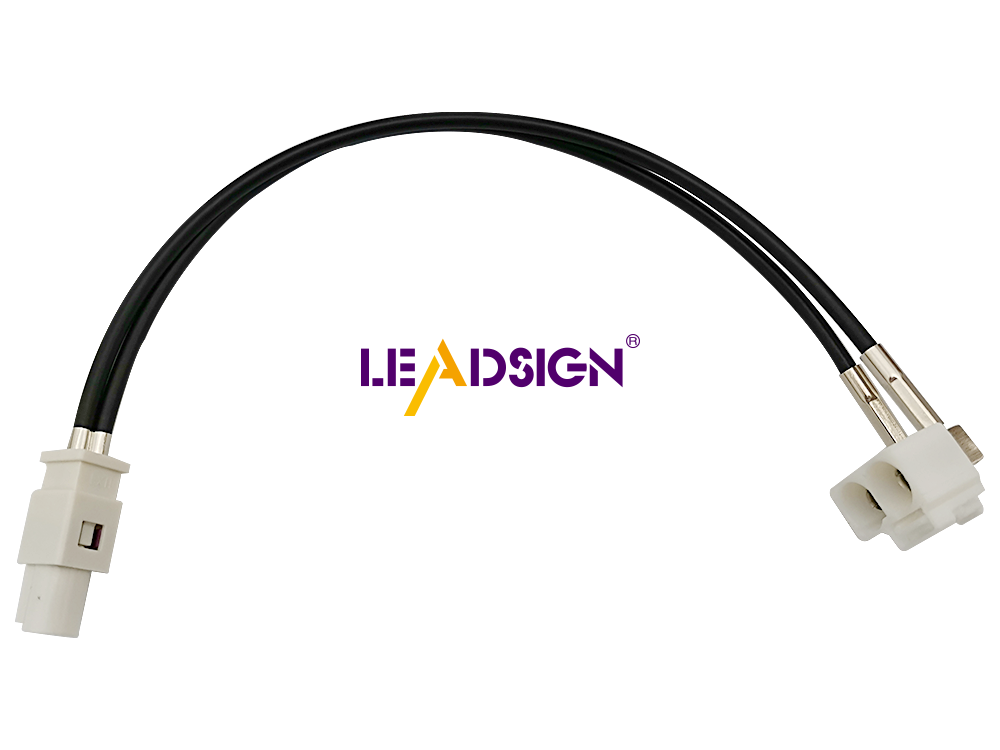Exploring the Types of Automotive Wires with Two Pin Connectors

Choosing the right car wiring wire is crucial for safety and performance. Car wires transmit electrical signals and power between components, ensuring they function effectively. Wire harnesses enhance safety with advanced systems, highlighting their significance in vehicles. Two-pin connectors play a vital role in car wiring. They facilitate signal transmission across various car systems. These small components power essential functions like the engine control unit and the radio, making them indispensable for your car's proper operation.
Key Takeaways
Choosing the right automotive wire is essential for ensuring safety and optimal performance in your vehicle.
Familiarize yourself with different types of automotive wires, such as primary, cross-linked, and battery cables, to select the best option for your car's needs.
Two-pin connectors are crucial for reliable electrical connections, helping to prevent issues that could affect your car's performance.
Utilizing two-pin connectors simplifies the installation and repair of car wiring, saving you time and effort.
Investing in quality connectors and wires enhances the longevity of your car's electrical systems, protecting them from environmental damage.
Always consider factors like heat resistance and wire specifications when selecting automotive wiring to ensure durability and functionality.
Regularly check and maintain your car's wiring and connectors to keep your vehicle running smoothly and safely.
Types of Automotive Wire

Knowing about different car wires helps keep your car safe. Each wire type has a special job and unique features. Let's look at these wires closely.
Primary Wire
Primary automotive wire is the most used in cars. It's usually made of copper or aluminum and is very useful.
Features and Temperature Ratings
Type GPT Wire: This is a general-purpose plastic wire. It's bendable and easy to use, perfect for many car tasks.
Type TWP Wire: This wire is thin and has no lead. It can handle heat up to 105ºC.
SXL Primary Wire: This wire has thick covering, making it strong and good for hot places.
Common Applications
You see primary wire in many car parts. It's used for headlights, tail lights, and other electric parts. It's bendy and strong, great for general wiring.
Cross-Linked Wire
Cross-link automotive wire is tough and handles heat better than PVC wire. It's great for tough spots.
Features and Temperature Ratings
Type TXL Wire: This wire is very thin, good with heat, and bendy. It works from -40°C to 125ºC, fitting tight spaces.
Type GXL Wire: Like TXL, it handles heat well and is used where it's hot.
Type SXL Wire: With thick covering, it protects against scratches and heat.
Common Applications
Cross-link wire is used in engine areas and hot spots. It's perfect for under-the-hood and tough places.
Battery Cable
Battery cables move power from the battery to the car's system. They must be strong and dependable.
Features and Temperature Ratings
Type HDT Wire: This thick wire handles 85ºC. It gives strong protection for car systems.
Common Applications
Battery cables link the battery to the starter and other parts. They're built strong to handle big power loads for starting the engine and powering the car.
By knowing these wires, you can pick the right one for your car. Each type has benefits, keeping your car safe and working well.
Importance of Two Pin Connectors in Car Wiring
Two-pin connectors are very important in car wiring. They help your car wires work well and safely. Knowing their importance shows how these small parts help your car run better.
Job in Car Wiring
Two-pin connectors are key in car wiring systems. They join different car wires, letting electricity move easily between car parts. These connectors keep car wiring strong, making sure each part gets the power it needs to work right.
In cars, two-pin connectors link important systems like the engine, lights, and radios. They give a strong connection to stop electrical problems that could hurt your car's performance. You need these connectors to keep your car working well, so they are very important in cars.
Benefits of Two Pin Connectors
Using two-pin connectors in car wiring has many benefits. First, they give a strong connection that lowers the chance of electrical problems. This is very important in cars where safety and performance matter a lot. You can trust these connectors to stay connected even in tough conditions.
Second, two-pin connectors make setting up and fixing car wires easier. They are easy to connect, saving time and effort when working on car wiring. This makes them a favorite in cars, where being quick is important.
Lastly, two-pin connectors make car wire systems last longer. They guard against things like water and shaking that can harm car wires over time. By using these connectors, you keep your car wiring strong and dependable for a long time.
Picking the right car wire is very important for safety. Think about heat, weather, and rules when choosing. Correct wire size makes wires strong and works well with circuits. This stops problems and makes them last. Knowing wire types helps you choose the best one. This keeps your car systems working well and lasting long. It also keeps your car safe and running smoothly.
FAQ
What do wire connectors do in cars?
Wire connectors are very important in cars. They help send electrical signals between different car parts. This helps electronic parts work well together.
Why are car wire connectors important?
Car wire connectors join different parts in cars. They keep things safe and working well by making sure wires and cables stay connected.
What should you think about when picking car wire?
When choosing car wire, think about the wire's features, heat, weather, and rules. These things help the wire work well and last long.
Why do new cars need strong wiring?
New cars have more computers and networks. They need strong wires and connectors to support these systems.
Is soldering or crimping better for car wires?
Soldering is better for electricity than crimping. But a good crimp is usually okay. It's important to have a good connection between the wire and connector.
What can cross-link car wire handle?
Cross-link car wire can handle more heat, wear, and lasts longer. It's used in tough places like race cars or big machines.
What do car connectors do?
Car connectors are used for things like engine control, music systems, and lights. Different connectors are used for different jobs like high power or data signals.
See Also
Understanding HSD Connectors Essential for Automotive Applications
Enhancing Data Transfer in Vehicles with Advanced Connectors
Why FAKRA Connectors Are Crucial for Automotive Systems
An In-Depth Overview of HSD Connectors Explained
Significance of Fakra Connectors in Today's Automotive Designs

